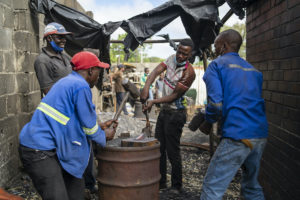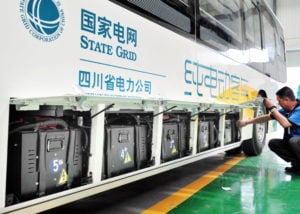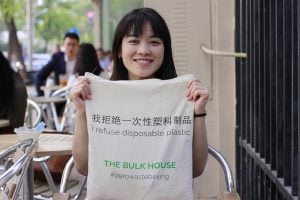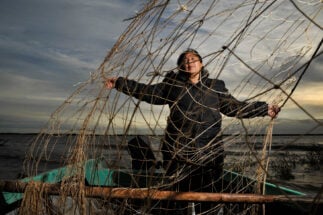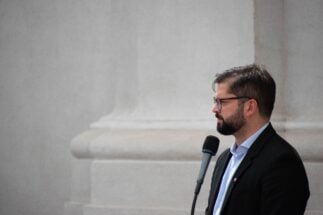Ranong is Thailand’s least-populated province, yet it battles a steady stream of plastic waste. Like many coastal parts of the country, Ranong’s turquoise waters are at the receiving end of some of the approximately 50,000 tons of plastic pollution that enters Thailand’s seas annually. This figure includes a portion of the several hundred thousand tons of plastic that are imported into the country from the rest of the world each year.
But since 2019, a team of Ranong residents have been intercepting plastic pollution on its path from land to sea. With the support of a social enterprise called Second Life Thailand, they gather 120 tons of plastic annually, which is mostly recycled into plastic chips to make new products. Then, for every ton removed from the environment, Second Life generates a “plastic credit”, which it sells on to purchasing companies who wish to offset their own waste footprint.
The Thai-based project is now one of dozens of global waste collection and recycling efforts that sell plastic credits. Echoing the principles of carbon emissions trading, these credits give companies an opportunity to indirectly tackle their own plastic pollution by funding initiatives that clear plastic pollution from the environment, recycle it, or do both.
This emerging marketplace now includes dozens of global companies which can purchase from about 32 credit schemes, each incorporating several plastic collection projects worldwide like the one in Thailand. Proponents say this credit mechanism could clear millions of tons of plastic pollution and curtail its hazardous impact on the environment. On the other hand, some are concerned plastic credits could encourage greenwashing and distract from the systemic solutions the industry requires to truly solve the crisis of plastic waste.
A new standard
To their proponents, plastic credits can help address the industry’s most intractable problems. Removing pollution from the environment ton-by-ton gives companies a way to account for the share of plastic they say they must produce because there aren’t alternatives to the material yet. They also help companies take responsibility for the share of plastic they generate that, beyond their control, leaks into the environment. Meanwhile, by charging companies for credits, in principle, these schemes steer more funding into systems that capture and recycle waste.
Another possible benefit is that plastic credits could speed up action on pollution. In many countries, governments are establishing extended producer responsibility (EPR) schemes that require packaging producers to pay for the collection, sorting and recycling of pollution downstream. There’s widespread agreement that these are needed, but financing and enforcing EPR regulation can take decades to roll out. Meanwhile, private-sector-driven plastic credits offer companies a route to immediately extract and recycle waste through existing projects.
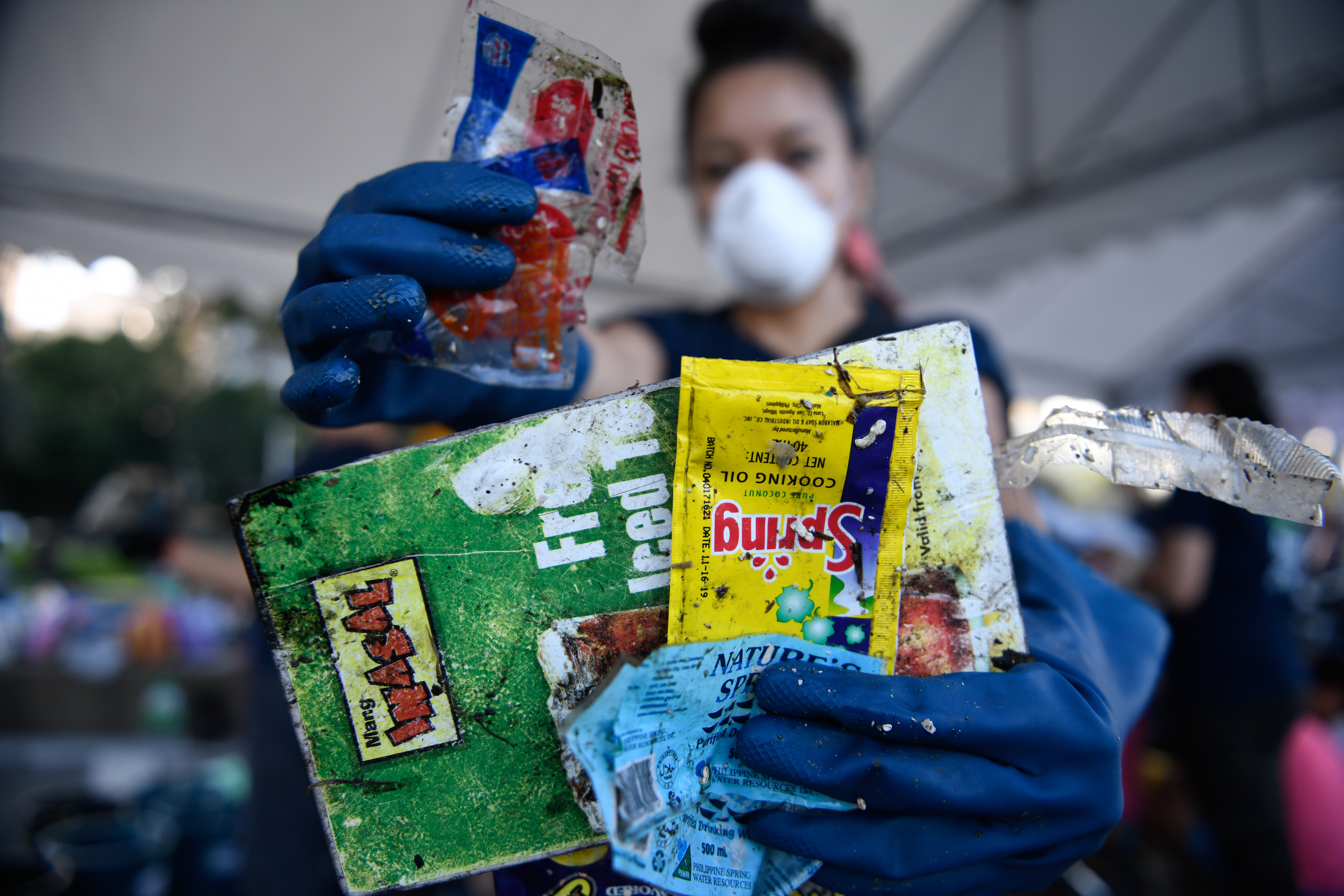
Yet this swiftly evolving credits marketplace is new and still unwieldy, with no overarching mechanism in place for plastic credit projects. “It has the potential to become a new financial instrument that is completely unregulated. It’s very immature now; it’s very volatile,” says Ina Ballik, senior manager at Yunus Environment Hub, a global social business network that is part of the consortium ValuCred, which was established to help streamline plastic credit systems.
However, awareness of the need for some controls began growing in 2019 when industry and NGO stakeholders came together to launch the 3R Initiative. This was established to draw up standards for how businesses should use plastic credits and how projects should sell them. The initiative’s biggest output so far is the Plastic Waste Reduction Standard, launched in February 2021 and now managed by international environmental standard-setting Verra, which first made its name as a greenhouse gas crediting programme in 2005.
For the foreseeable future, companies are still going to be using plastic, and plastic will still escape the systemSinclair Vincent, director of sustainable development innovations and markets at Verra
Verra’s Plastic Standard is the first to officially define a plastic credit as one ton of plastic waste removed or recycled. The organisation works with independent auditing companies that check plastic credit projects on the ground to ensure they comply with the standard’s requirements. Chief among these is that plastic being collected or recycled on behalf of credit-buying companies has to be additional to what’s usually removed, explains Sinclair Vincent, director of sustainable development innovations and markets at Verra. That’s crucial for ensuring that investment in plastic credit schemes measurably reduces pollution. Then, with information from those audits, Verra conducts a review. If a project meets the standard, Verra issues credits, representing its stamp of approval.
So far, Verra has listed four plastic credit projects, which is the first stage of the registration and verification process: “Another two dozen are looking to enter the system within the next 12 months. Of those projects, a good number are in Asia,” Vincent says. Second Life in Thailand is one of the companies now seeking approval with Verra for their plastic credit.
Such standards could become necessary to govern a marketplace that seems bound to grow: “For the foreseeable future, [companies] are still going to be using plastic, and plastic will still escape the system and end up in the environment,” Vincent says.
The risks
Others observing this growing momentum are starting to weigh up the risks. Plastic credits are designed to tackle the symptoms of the plastic crisis, not the cause, which is the ongoing production of virgin, single-use plastic. There’s currently no formal safeguard to stop companies producing more and more plastic and plastic waste. So there is a contradiction at the heart of the schemes: companies can keep producing more plastic while also benefitting from the green image associated with credit schemes.
The 3R Initiative’s Corporate Plastic Stewardship Guidelines, which it drafted alongside the Plastic Waste Reduction Standard, have tried to tackle this, stipulating that companies should only use plastic credits after first reducing and reusing plastic waste. “It all goes back to making sure that companies are taking action inside their value chains rather than only using plastic credits to balance things out,” Vincent says. But currently these are just guidelines and adopting them is voluntary: the onus is on projects to comply with Verra’s standards, while participating companies still have some wiggle room in how they use the schemes.
Some have approached this problem by attempting to offset their entire plastic footprint by themselves – like Nestlé, the world’s largest food and beverage company. The company is transparent about the scale of its plastic contribution, disclosing that in 2020 it used 269 billion pieces of plastic in its product packaging. Along with Danone and Tetra Pak, in 2019 Nestlé backed the 3R Initiative, but it does not currently purchase plastic credits. Instead, it works more directly to process plastic before it becomes pollution: the company partners with projects in several countries to gather and recycle equivalent amounts of plastic to the quantity its operations produce in each country. Its biggest success so far has been in the Philippines. “We achieved plastic neutrality in August 2020,” says Georgios Galanos, Nestlé’s global head of packaging sustainability. “Which means that Nestlé Philippines collected and co-processed the equivalent amount of plastic as contained in the products sold.” As of April 2020, this meant 18,000 tonnes of plastic, according to Nestlé.
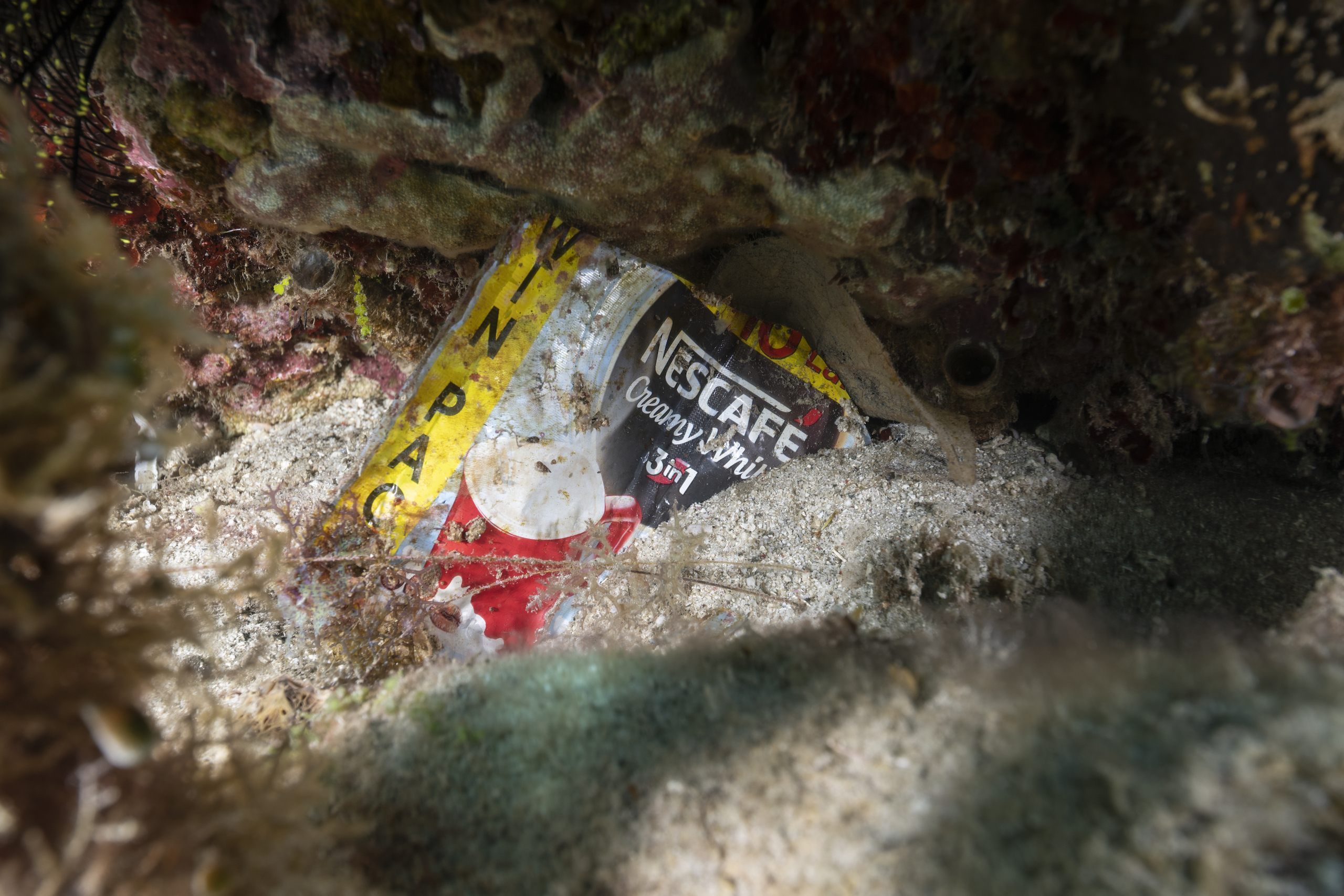
The company calls this strategy “one ton in, one ton out” and says it will use it to achieve plastic neutrality in 12 other countries in Asia, Africa, and Latin America. That’s combined with Nestlé’s commitment to reduce the use of virgin plastics in its products by a third by 2025, Galanos says.
Even if more companies took this full-offset approach, the principle of one-in, one-out, which also underpins plastic credit schemes, oversimplifies the complexity of plastic waste, experts believe. Plastic might create dire environmental and social impacts in one country that can’t be accounted for by gathering it from a different place. Meanwhile, offsetting the production of certain single-use plastics, which are almost impossible to recycle, by gathering reusable plastic bottles, isn’t an equal trade.
As long as a company uses or sells plastic, it cannot be plastic neutralKori Goldberg, a plastic waste specialist at WWF
What’s more, organisations like the WWF worry that despite these complexities, some companies are overstating the environmental benefits of plastic credits – a slippery slope to greenwashing. That’s illustrated by claims of “plastic neutrality” or “offsetting” that typically accompany these schemes and may mislead consumers. These may imply that a company’s impact is erased, yet removing plastic waste doesn’t account for the emissions involved in making it from oil and gas, for example. “As long as a company uses or sells plastic, it cannot be plastic neutral,” says Kori Goldberg, a plastic waste specialist at WWF and co-author of a recent WWF position statement on plastic credits. She adds: “This is especially dangerous when companies prioritise this marketing tactic over more impactful plastic waste mitigation activities” – like reducing the production and use of virgin plastic. Vincent adds that Verra is against this terminology, too. “We’ve seen what these types of terms can do in the carbon space. It allows for greenwashing claims to seep in and cause uncertainty in the market.”
Meanwhile, plastic credits are dogged by another challenge: deciding the appropriate price per ton. A central selling point of credit schemes is that they can push investment into waste management infrastructure. But some are sceptical about how they will do that without formal mechanisms to build the cost of that infrastructure into the price of the credit itself. For example, a project might exist in a city where there’s the capacity to gather waste but no infrastructure to safely dispose of or recycle it, Ballik of ValuCred explains. Without credits that reflect the cost of building a waste management system, these schemes will be limited in what they can achieve. “This is an end-of-pipe solution because we will keep on sponsoring beach clean-ups but never actually invest in the infrastructure that prevents plastic going into the environment,” Ballik says.
The question of how to price plastic credits has a social element, too. In many countries – especially in Asia – waste management often depends on the services of millions of informal waste pickers who trade waste for cash in lieu of a wage. This informal economy provides an essential service: a 2019 report found that in nine Southeast Asian cities, informal waste pickers are responsible for 97% of plastic bottle recycling. Ballik fears that if plastic credit schemes don’t factor in the costs of fairly supporting these essential workers, they risk entrenching this inequity.

A place for credits?
Against this backdrop of pros and cons, the question remains whether plastic credit schemes can play a meaningful role in reducing pollution, or whether they’re too riddled with risk. The reality is that humanity generates several hundred million tons of plastic waste each year, and plastic credits are among a very limited number of tools we have to curtail that. “[Plastic credits] have a legitimate value. We have to bridge the years from today until fully fledged EPR systems will be rolled out,” Ballik says.
But to play this critical intermediary role, we will need to design them better. The first step is making them reflect the true infrastructural and social cost of managing waste. For the past year, ValuCred has researched this: “We’re trying to build, from the bottom up, the price it would actually be if you pay for the people, the infrastructure, the bins, the collection, the recycling, the planning, the overheads, the risks,” Ballik says. In August 2022, they will publish their result: the Standards Process Model for plastic credits, which they hope will guide schemes, in part, on how to price these tokens appropriately.
Ideally, credit schemes should also gradually ratchet up these costs over time so that, instead of being a cheap and easy offset for companies that want to maintain business-as-usual, they deter companies from producing plastic and encourage them to seek alternatives. Even so, a question hangs over how effective these schemes can really be at their current scales, and considering that they’re voluntary. Ballik believes the only way the “polluter pays” principle will truly become entrenched is if it is governed by treaties or conventions that compel companies to take full responsibility for their waste. That means going beyond just gathering and recycling plastic from the environment, to tackling plastic production and pollution along the entire supply chain. “It needs to be mandatory if you really want to instil this,” she says.
Ballik also believes we’re now at a critical inflection point where plastic credits could quickly evolve into something that does more harm than good. We should take the opportunity now to forge them into tools that can support real progress towards environmental and social change. “They’ve not yet made a mark. But before they get there, let’s do it right.”



